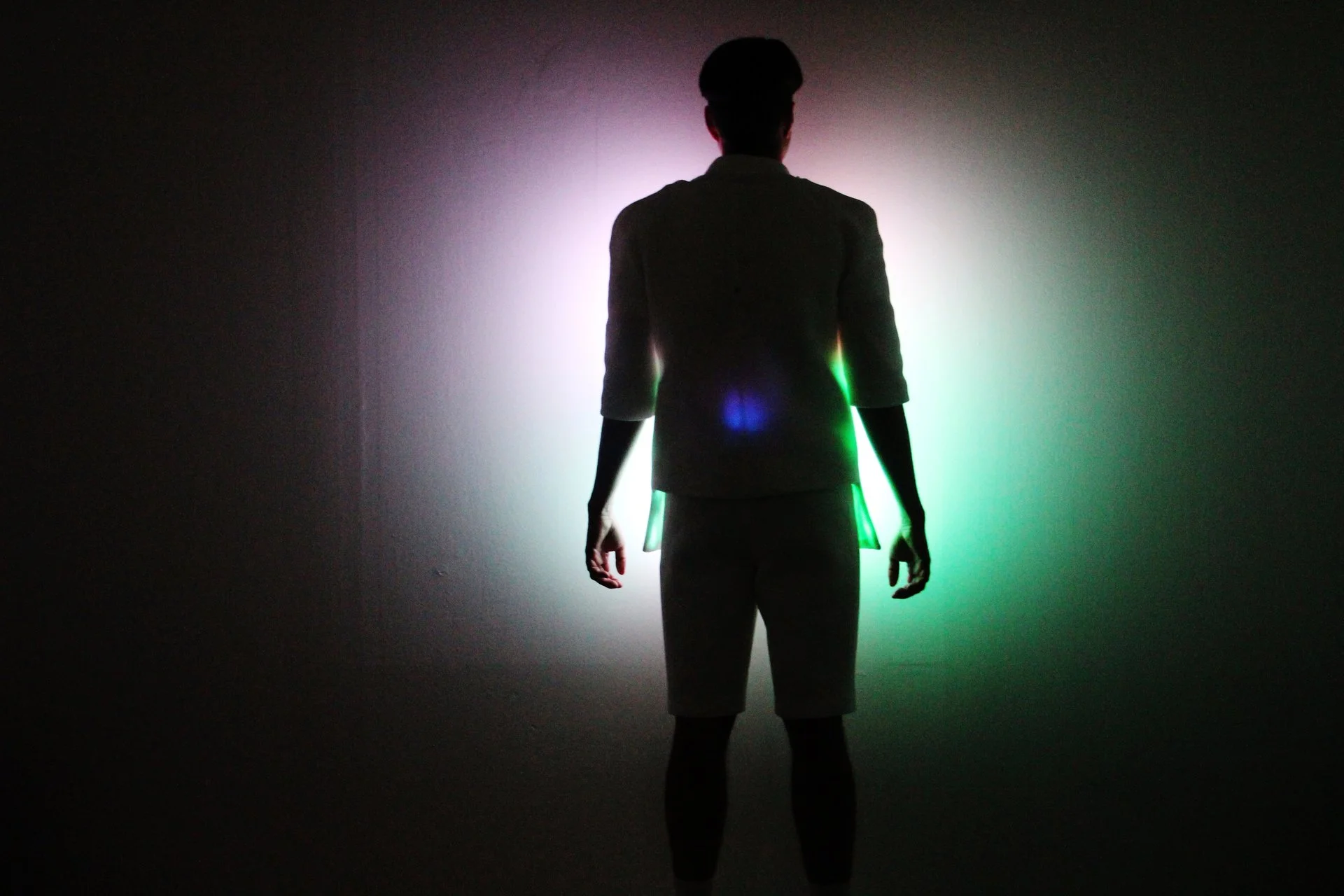Wearable Facade
Wearable Facade is an interactive installation and performance that merges fashion, technology, and architecture to create a dialogue between personal and public spaces. At its core is a smart garment that dynamically captures the colours and shapes of its surroundings and translates this environmental data into visual patterns displayed on both the garment and a building's media façade, forging a unique connection between the wearer, architecture, and urban space.
The garment is equipped with a matrix of 800 LEDs on its front, a micro-camera on the back, and a Raspberry Pi computer embedded within. As the participant moves through the city, the camera captures images of the environment, and the onboard computer processes this visual data using OpenCV, a library for computer vision. An algorithm analyses key aspects of the captured images, such as shapes, line compositions, and dominant colours. Based on this analysis, the system generates dynamic patterns that are displayed on the garment's LED surface every 10 seconds. Simultaneously, these patterns are projected onto the media façade of a nearby building, extending the visual experience into the public domain.
The architectural environment is the inspiration for the patterns and a canvas for the performance, highlighting the interplay between the individual and the collective space. This dual-display format allows viewers to witness how the urban landscape shapes and is reflected in the evolving patterns.
Wearable Facade invites the audience to re-examine their surroundings, emphasising the often-overlooked visual characteristics of urban spaces—colours, shapes, and textures. By transforming the mundane act of walking through a city into a visual and participatory event, the piece encourages a deeper awareness of the spaces we inhabit.
Collaborative and Participatory Process
During its presentation in Brussels as part of In/Visible City 2015 and Design September 2015, the project involved workshops with graphic design students and creatives. Participants explored their neighbourhoods, capturing images and identifying defining architectural features and colours. These explorations informed new patterns for the garment, fostering a collective sense of discovery and creativity.
The workshops discuss the importance of observing and engaging with one's surroundings—turning the act of design into a participatory process that intersects art, technology, and community.









Concept & Design: Ricardo O’Nascimento
Materials: Textile, Electronics.
Year: 2015
Electronics: Erik Overmeire
Photographs: © Mathias Moxter; © Frank Vinken
Video: © Public Art Lab & Ludwig Reuter
Commissioned by Urbane Künste Ruhr within the Connecting Cities framework
Supported by: The Culture Programme 2007-2013 of the European Union
Presented by iMAL in Brussels as part of In/Visible City 2015 and Design September 2015